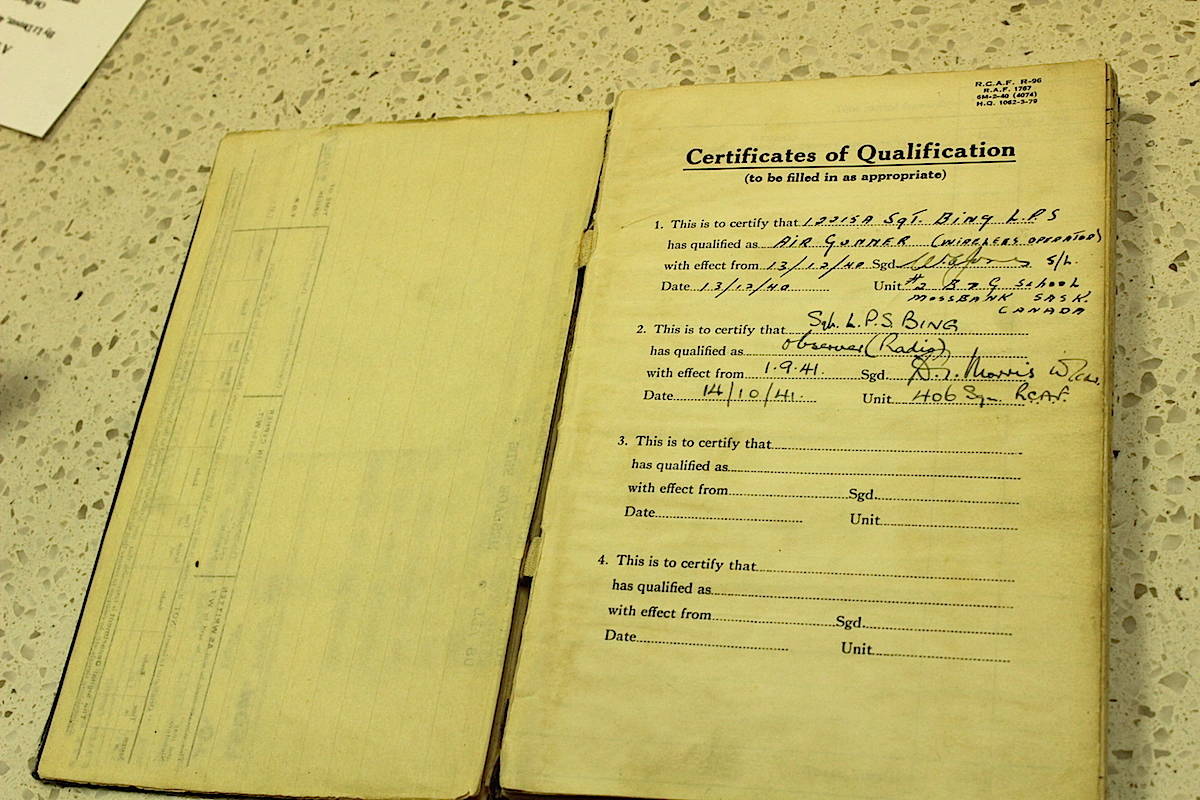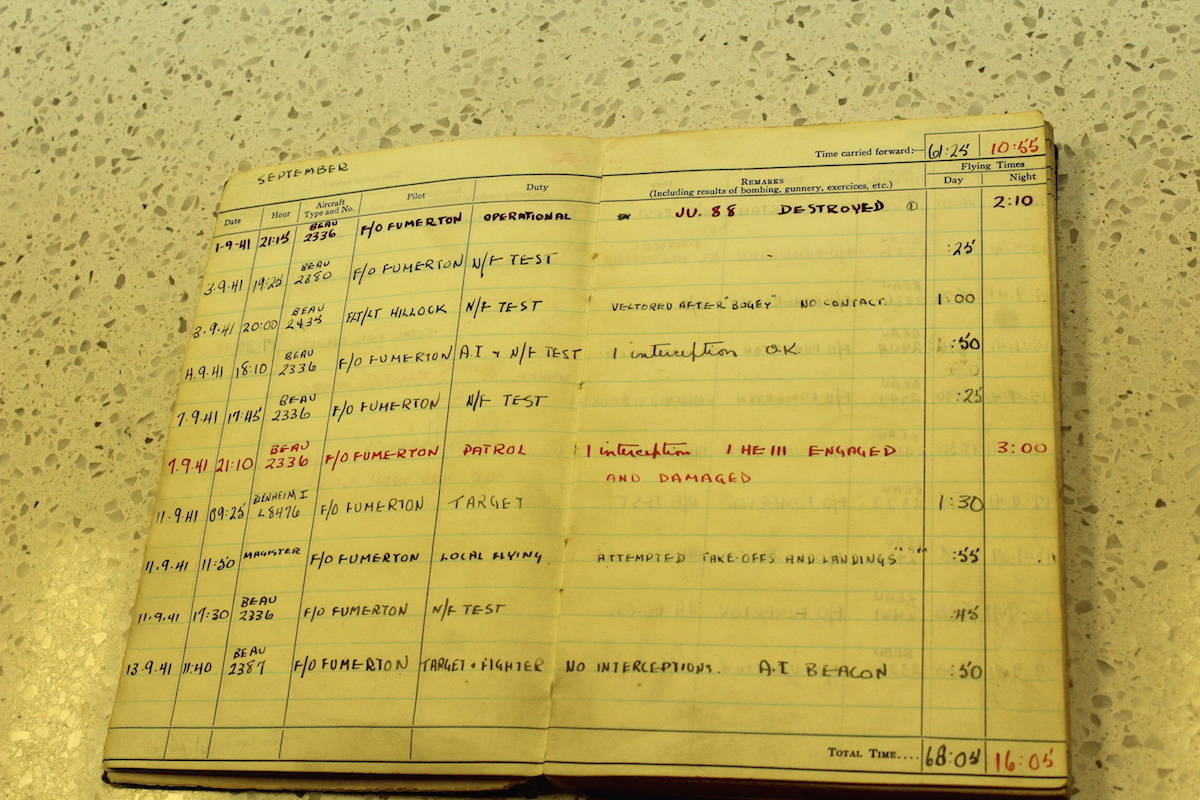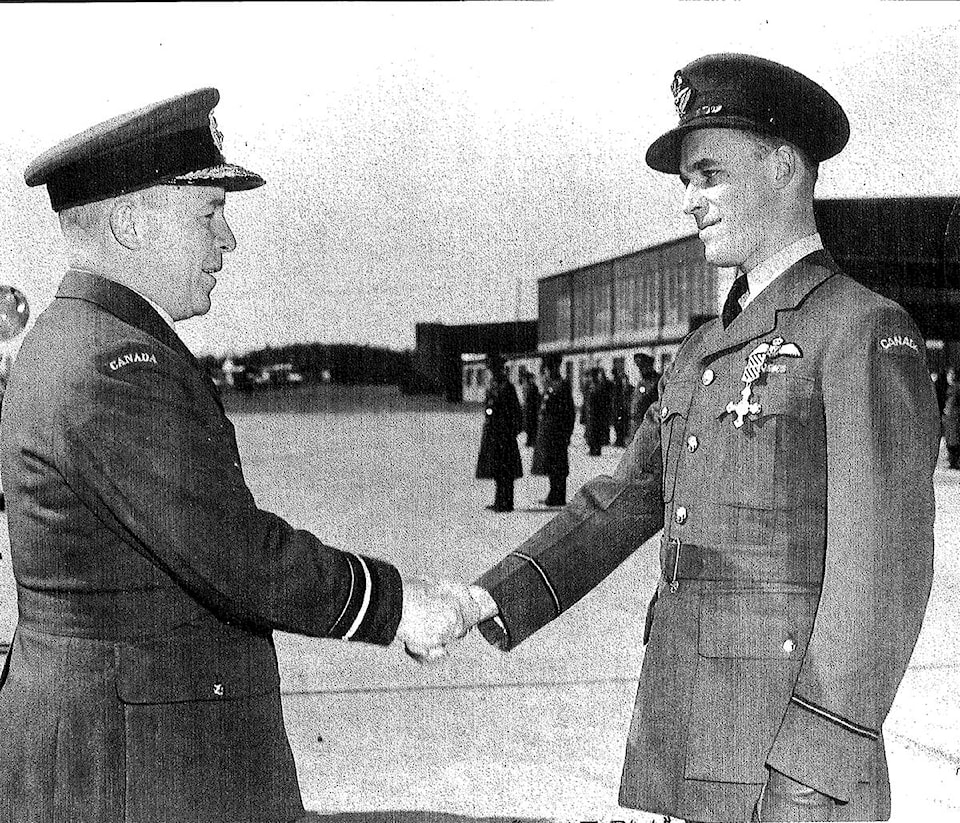The memory of Patrick Bing — a Second World War air gunner who later became an alderman in Comox — lives on at a Nova Scotia training facility that bears his name.
The Fumerton and Bing Training Centre is a 400,000 square foot building in Shearwater, N.S. Fumerton refers to Second World War fighter ace Robert ‘Moose’ Fumerton, for whom Bing often served as navigator.
“That’s where they train everybody that is involved with the new Sikorsky Cyclone helicopter that’s coming onboard,” said Gerrard Bing, Patrick’s son, an Errington resident who spoke at a recent dedication ceremony in Shearwater.
In the vestibule of the building is a display that shows photographs, entires from his father’s war diary and the ’Kill Board’ that was cut from a Junkers 88 in 1941.
“When my father and Moose shot down the first German aircraft at night, they were able the next day to go back and find the crash site, which was in an old, abandoned brick factory in England,” Gerrard said. “They then cut the German iron cross insignia out of the side of the aircraft with an axe. This became what was known as the Kill Board where the 406 Squadron kept track of the enemy aircraft that were shot down, and the trains that were bombed. This found its way back to Canada and sat in a war museum for years and years. When the 406 Squadron decided to name the building after Moose Fumerton and my dad, they dug up the whole Kill Board and had it brought down to Halifax.”
After joining the RCAF in 1939, Bing was first stationed at Jericho Beach in Vancouver, and then in Montreal to train as a wireless operator/air gunner. In 1940 he was stationed in England, where he met Moose. They were part of the RCAF Night Fighter Squadron, No. 406, and were to be using top-secret equipment called ‘radio location,’ aka RADAR.
“The Germans did not know we had RADAR,” Gerrard said. “That was a real secret, and they couldn’t figure out, all of a sudden, why we were able to shoot down their airplanes at night. They figured this is when they would do all their bombing raids because they were safe.”
Bing and Moose were credited with 11 victories. On two occasions they were shot down, once landing in the Mediterranean Sea, where they spent a couple of hours paddling a dinghy before being rescued.
After the war, Bing remained in the air force for 29 years, moving up the ranks to squadron leader. He was posted to the Pentagon for a few years with Airforce Intelligence as an exchange officer.
Bing did two tours of Comox, where he retired in 1968. He served a couple of terms on town council, and owned a share in the Comox Golf Club.
“He was a busy person,” Gerrard said. “Never really talked about the war that much, as a lot of people didn’t. We never got any of the horror and the gore. He just wasn’t that type of a person.”
Bing passed away at age 91 in 2011. For his war service, he was awarded the Distinguished Flying Cross & Bar, 1939-45 Star, Aircrew Europe Star & Atlantic Clasp, Africa Star & North Africa 1942-43 Clasp, Canadian Volunteer Service Medal & Clasp, War Medal 1939-45, Canadian Forces’ Decoration & Clasp, Operational Wings, and Siege of Malta Medal.


